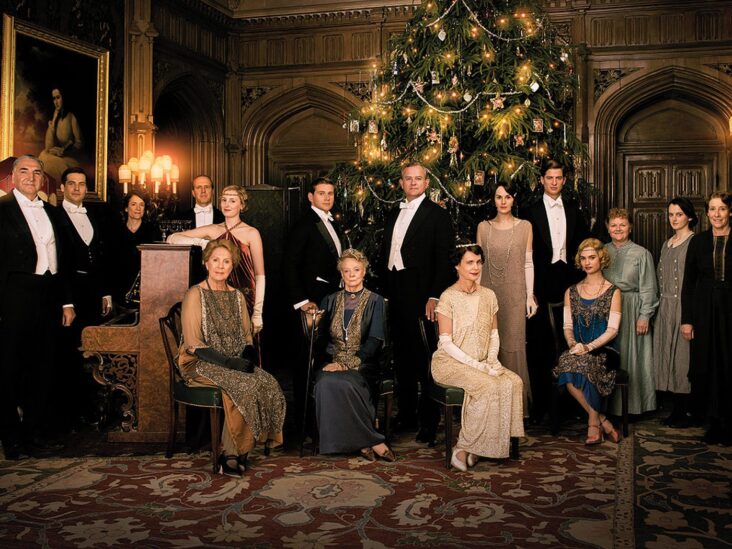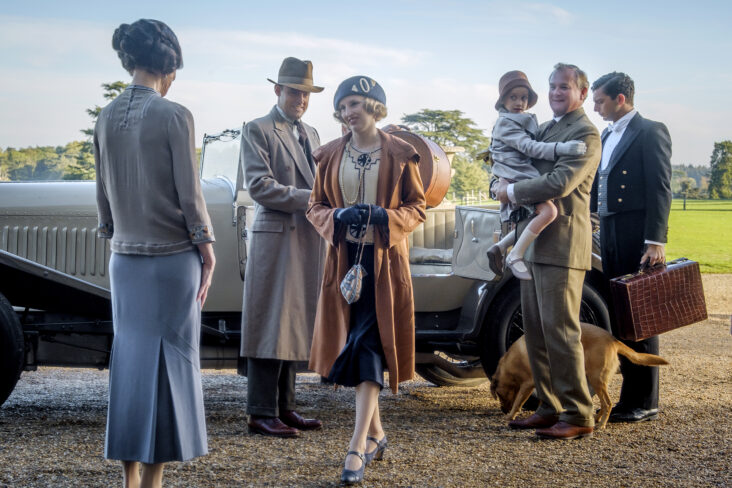Downtown Abbey is a British historical television series set in the early 20th century, produced and co-produced by Julian Fellowes. The series began airing on ITV in the United Kingdom on September 26, 2010, and in the United States on PBS, which sponsored the production of the series as part of the Masterpiece Classic anthology, on 9 January 2011.
Still talk of the town
Six seasons later, Downtown Abbey is still the top PBS drama of all time. The series is the most watched drama in 45 years of PBS. At the peak of popularity, Downtown Abbey had an average weekly audience of 13.3 million viewers in Season 4. The series sank slightly the following season with a weekly audience of 12.9 million viewers.
The premier of last season, released on January 4, attracted an estimated 9.9 million viewers and received a domestic average of 6.2 million on the same day. The episode almost coincided with the first season of Season 5, with 10.1 million viewers, and tied with Premiere for the fourth season as Downtown Abbey’s highly rated episode.
Breaking records

Source:wox.com
Downtown Abbey has often been a big hit in the colonies, but the British broadcast of the last of the series, which was broadcast at Christmas, broke the record across the lake. Of the highest gains in the history of British TV history, an increase of 4 million episode views increased the number of viewers to 10.9 million.
Last year, Downtown Abbey even donated a Super Bowl for a ride. For the fourth year in a row, the drama was a high-profile show at 9pm after the big game itself. The episode had an average audience of 6.39 million viewers and an average of 4.1 million households.
Surprisingly, Downtown Abbey also recorded social media records for this public broadcaster. During Season 5, the drama produced more than 190,000 tweets and a total of 24 million appearances.
PBS comeback
British drama has brought PBS back to light. “When we have a situation like this, non-PBS viewers also know about PBS, and once they have done that most of them stay,” Rogers of PBS SoCal said. “Thanks to Downtown, people are reminded that there is a trusted quality product and… they should look into that too.” Thanks to Downtown Abbey, the American public broadcaster is now the most popular in the world. In 2013, the global audience was estimated at 120 million. The show also sells to more than 220 venues, which is great for British television.
Cultural phenomenon

Source:nbcnews.com
As a non-US English language series, Downtown Abbey has broken many records. Since the PBS series premiered in 2011, Downtown Abbey has won 11 Emmys (out of 51 nominees), three BAFTAS, three SAG Awards, a Producers Guild Award. After two seasons, the series has received the highest promotion of the Primetime Emmy of any international television series.
There is no doubt that within the context of the new golden season of TV, Downtown Abbey, who ended his six-season run on Sunday night, was a rare occurrence.
Narrative
Its narrative did not focus on Tony Soprano’s “tough man”, Don Draper, or Walter White. There was no cable network or streaming on Netflix or Amazon. Its news lines were not obscene or Zeitgeist-y or removed from the headlines, except that you were reading websites where “The Maid’s Wife was trying to make soup for the first time” counted as news coverage. This is a showcase with a Masterpiece connection, the popularity of masters and ladies, and an under-butler protocol modification. It starred in very white people, none of whom could pronounce the word diaphragm but who often and enthusiastically used the word golly. Broadcast on PBS, due to the weather, it has long been considered a former professor of dense professor of TV networks. But then it became something, something very popular, praised, and rooted in our famous culture of ignoring it.
More than anything
Downtown Abbey isn’t just the most watched series in PBS’s 45-year history; it was a series that was widely watched at any rate. The premier of the sixth season in January attracted 9.9 million viewers, which is a desirable number for most network series these days and is approaching or exceeding the viewing of recent TV events such as Breaking Bad (10.3 million) and Mad Men (4.6 million).
The series has garnered a host of Emmy nominations so far, including Best Drama nod each season that was on the air, with the exception of the first, when she was nominated and won the Best Miniseries category. If the amount of honors and parodies the inspiration for the TV show shows its impact – and I would argue against it – you don’t need to look far to see how important Carson & Co’s ongoing proverb is. Named in Parks and Recreation, 30 Rock, The Mindy Project, Brooklyn Nine-Nine, and How I Met Your Mother; completed Sesame Street, Saturday Night Live, Late Night With Jimmy Fallon, and the entire Comedy Central series, Another Period, whose presence was limited to the success of Downtown Abbey; and references to major moving images such as Iron Man 3 and Train wreck. As this last movie taught us, Downton was so great, even LeBron watched it.
But why? What about this exhibition that provided cultural adherence and kept many tunes every so often, in January, for more than half a decade? When future American writers think about Downtown Abbey’s relationship with time and space, I have no doubt they will see the fact that it began in 2010 in the UK and 2011 here in the US, while we were slowly recovering from the global financial crisis that began in 2007. It was a time when society had to be less interested in watching rich people face the problems of rich people. However, with Downtown, we have done just that.
These were not even rich people whom we could express our love for. (There was an exception to that rule, of course; to find out more, please report to an actor named Larry Gray, and while you are there, please slap me in the face.) Lord and Lady Grantham, their family, and their social equality sometimes meant nothing or stupidity or drowning. With so much fairness that they turned game times into jokes. But the show invites us to sympathize with them to the same degree that we were asked to sympathize with the actors of the hard-working working class.






